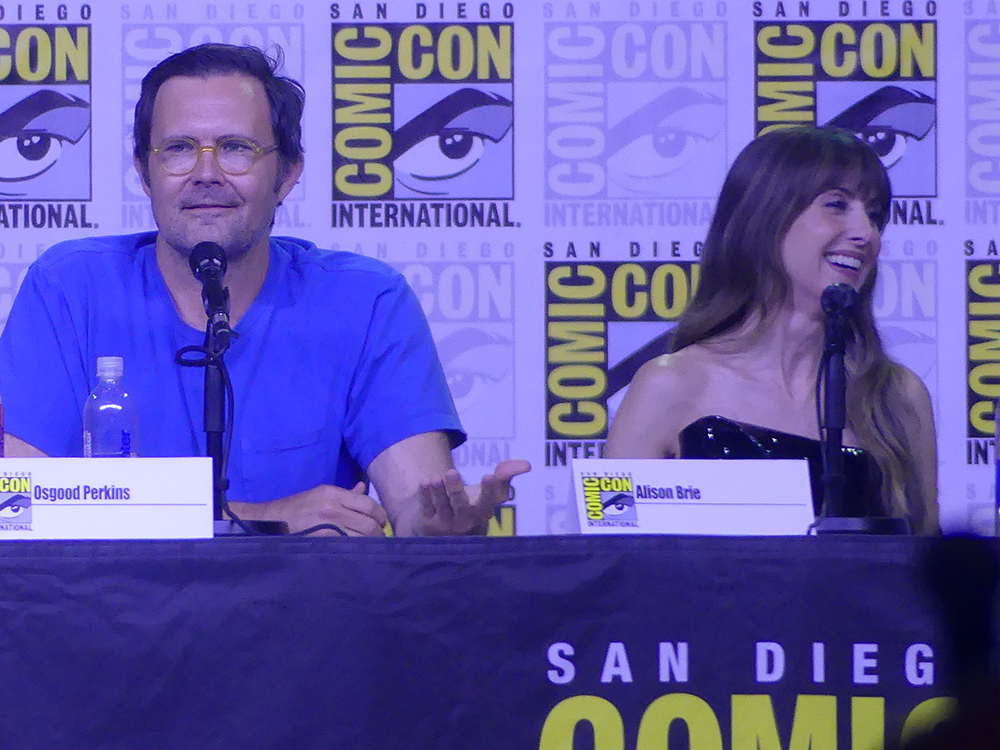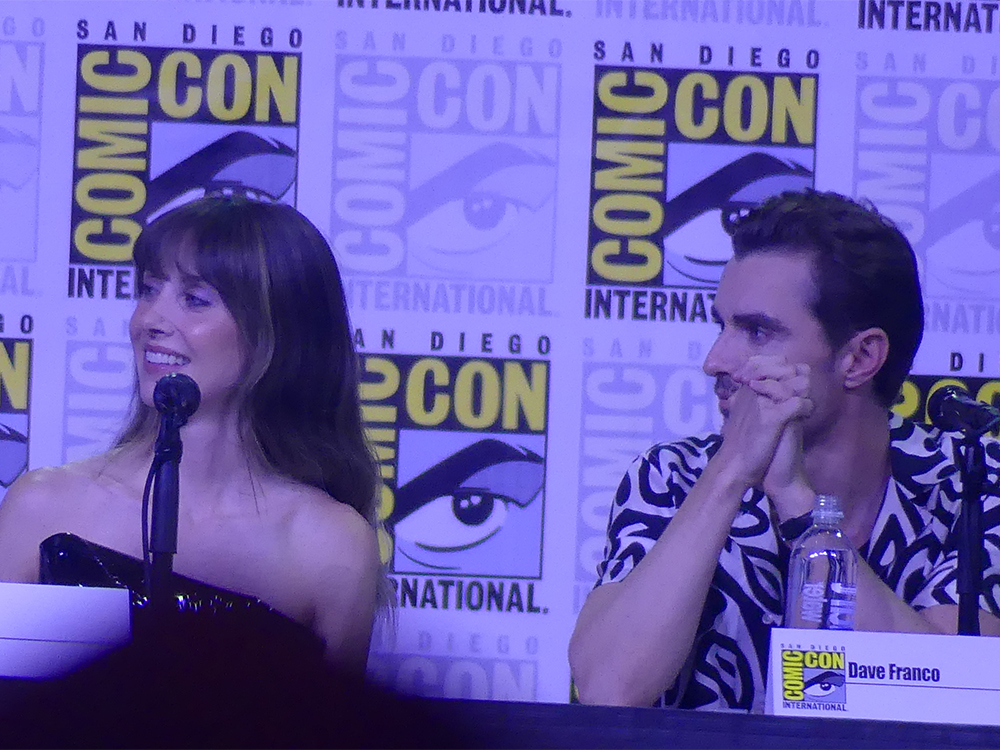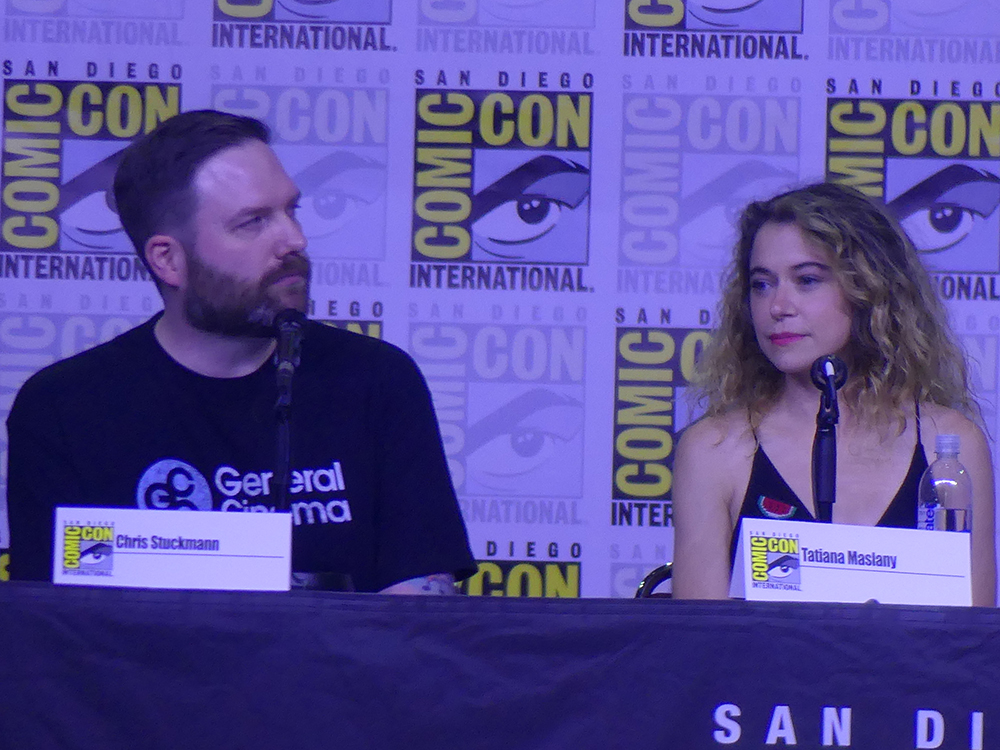Convention - SDCC 2025 : Neon Panel – The Next Wave of Horror Redefines the Genre
By Mulder, San Diego, Convention Center, Ballroom 20, 25 july 2025

On Friday, July 25, 2025, San Diego Comic-Con’s Ballroom 20 transformed into a cathedral of dread and cinematic passion as Neon unveiled its inaugural “Next Wave of Horror” panel. For a studio making its first foray into Comic-Con programming, expectations were high — but what unfolded felt less like a promotional showcase and more like a rallying cry for original storytelling in a film industry increasingly reliant on franchises. The event, announced earlier by Variety, promised exclusive footage, behind-the-scenes revelations, and unfiltered conversations with some of the most exciting voices in contemporary horror. In attendance were Osgood Perkins (Longlegs, The Monkey) and Tatiana Maslany for Keeper, Michael Shanks alongside stars Dave Franco and Alison Brie for Together, and filmmaker Chris Stuckmann for his debut feature Shelby Oaks. Each project represented a different angle of horror — psychological, supernatural, and relationship-driven — yet all shared the common thread of being deeply personal, auteur-driven works championed by Neon.
The panel’s energy was set from the moment Osgood Perkins took the microphone. Rather than simply discussing Keeper, he used his time to honor underrepresented voices in the arts, especially within the LGBTQ+ community, linking this to his own family history. Sharing a heartfelt tribute to his father, a queer man in Hollywood six decades ago, Perkins reminded the room how essential it is to amplify voices that society still tries to silence. His request for the audience to join him in collectively mimicking the infamous “knife” sound from Psycho was both unexpected and unifying — turning Ballroom 20 into an echo chamber of Hitchcockian homage. It was a moment that not only broke the ice but also encapsulated the fearless authenticity that Neon cultivates in its collaborations.

When conversation turned to the films themselves, Michael Shanks spoke candidly about Together, a horror fable about the corrosive nature of codependency, starring real-life couple Dave Franco and Alison Brie. Though its themes resonate deeply with pandemic-era isolation, Shanks revealed the script predated COVID, only to take on sharper meaning after the world experienced enforced closeness. Franco and Brie detailed the physical demands of shooting — from contorting their bodies into painful positions to enduring full-nude unconscious shower scenes against porcelain walls — with an enthusiasm that suggested the creative rewards outweighed the bruises. Brie was especially effusive in her praise of Neon, calling the studio her dream distributor and describing Sundance as a “dream come true” moment when the partnership was finalized.
In contrast, Shelby Oaks represented a more investigative and supernatural strain of horror. Chris Stuckmann, the film critic-turned-director, explained how the pandemic unexpectedly accelerated his creative process. Co-written with his wife Samantha Elizabeth, the story follows Camille Sullivan’s Mia as she searches for answers about her sister Riley’s disappearance during a paranormal web series shoot. Stuckmann’s anecdote about pitching the film in summer 2020 — at a time when Zoom was still a novelty — illustrated how resilience and adaptability can birth a film even under unprecedented conditions. For many in the audience, his leap from critic to filmmaker underscored Neon’s commitment to nurturing fresh talent and unconventional career paths.

Then came Keeper, shrouded in secrecy yet pulsing with Perkins’ signature dread. Starring Tatiana Maslany and Rossif Sutherland, the film was described as a relationship horror exploring mental and emotional unease rather than physical spectacle. Maslany described the experience as “mental buffering” — navigating fear and uncertainty through her character’s relationships — while Perkins joked about preferring “mental abuse” in the creative process over physical punishment. The director also revealed the spontaneous origins of the film, conceived during a production delay for The Monkey. With no script and only a few compelling pages, the team embraced a freeform, low-pressure approach that birthed something “childish in its freedom” yet deeply resonant.
Throughout the panel, the admiration between the filmmakers and Neon was palpable. This wasn’t hollow press junket chatter; it was the kind of genuine mutual respect that has become increasingly rare in an industry driven by quarterly earnings reports. Neon’s track record — from Longlegs to The Monkey and now this 2025 slate — is a testament to its faith in auteurs and in horror as a space for originality. As one attendee observed, while superhero films and franchise sequels dominate multiplexes, movies like Together, Keeper, and Shelby Oaks are rarer finds, each carrying the personal imprint of their creators.

By the time the discussion ended, it was clear that Neon’s presence at SDCC was more than a marketing exercise; it was a manifesto. The studio demonstrated that originality and commercial success can coexist, and that horror — in all its ugly, beautiful, and haunting forms — remains one of the last bastions for risk-taking storytelling in cinema. As the crowd spilled out of Ballroom 20, some clutching their pre-ordered “Bloody Variant” The Monkey figurines signed by Osgood Perkins, the unspoken takeaway was this: in a cinematic landscape crowded with predictability, Neon continues to prove that horror, when given to the right hands, can be the sharpest and most fearless blade in the industry’s arsenal.
You can found in our Flickr page our photos
Photos and video : Boris Colletier / Mulderville

